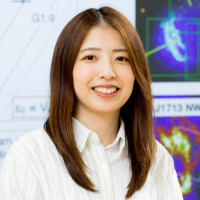Particle acceleration in young supernova remnants with X-ray and gamma-ray observations
- Date
- January 9 (Thu) 10:00 - 11:00, 2020 (JST)
- Speaker
- Venue
- Language
- English
A supernova remnant (SNR) is a prominent candidate as an accelerator of galactic cosmic rays. In a widely accepted theory of diffusive shock acceleration, a particle is accelerated by diffusing back and forth across shock waves. The spectral cutoff shape of accelerated electrons is determined by diffusion and cooling and appears in the X-ray and TeV gamma-ray energy ranges, respectively, through synchrotron radiation and inverse Compton scattering. To measure the cutoff shape precisely and explore the corresponding diffusion coefficient and acceleration efficiency, we systematically analyze young SNRs that emit nonthermal X-rays and TeV gamma-rays. We found a variety of particle acceleration depending on individual SNRs: the cutoff energy is well-reproduced by the theoretical prediction in Kepler’s SNR and Tycho’s SNR, while it might be affected by the surroundings in Cassiopeia A and SN 1006. Putting all the eleven SNRs analyzed in this study together, the acceleration tends to be more efficient as the SNR evolves and becomes older, which implies a connection with turbulent production.

